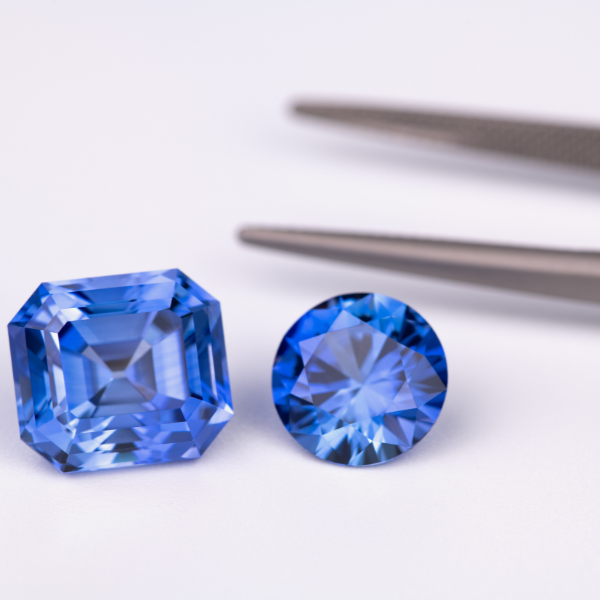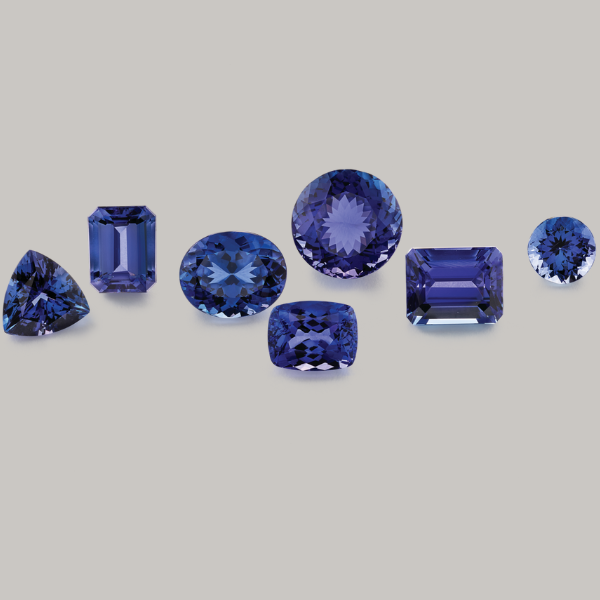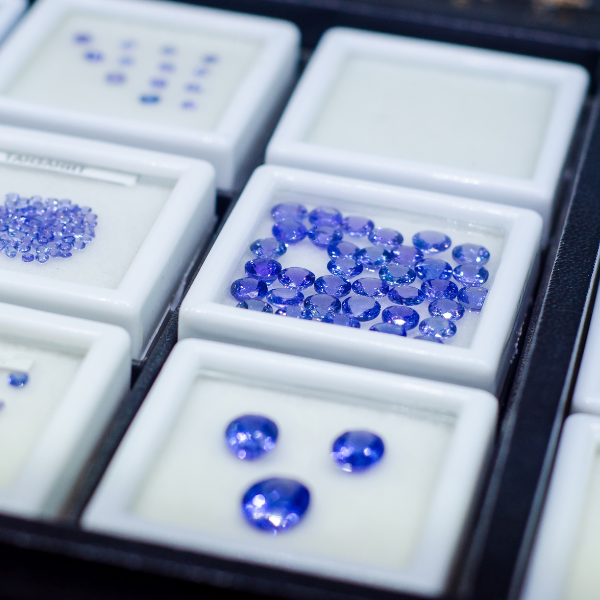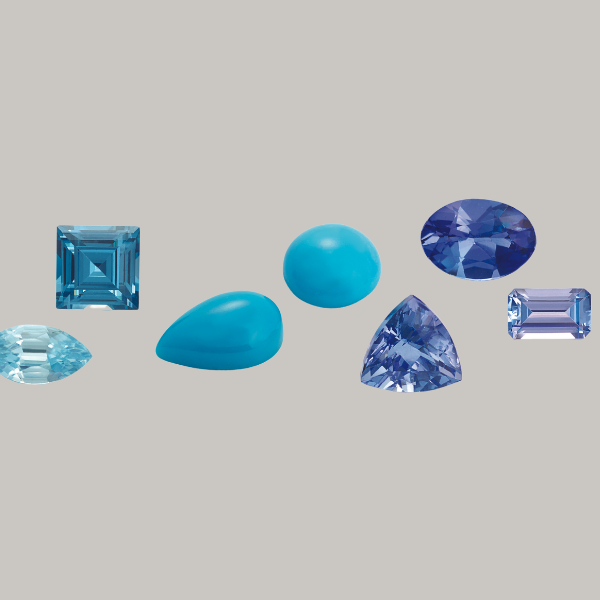Hurry Up, Sale Ends in
D |
H |
M |
S
Tanzanite, a captivating gemstone that dances between mesmerizing blues and violets, has become a coveted treasure in the world of jewelry. Its beauty is undeniable, but its story goes far beyond aesthetics. Delving into the world of tanzanite unveils a tale of geological wonders, geographical exclusivity, and a vibrant future as a valuable gemstone.

Unlike most gemstones discovered slumbering deep within the earth's core, tanzanite boasts a truly extraordinary origin story. Its journey begins millions of years ago with volcanic eruptions in the region that is now northern Tanzania. These fiery upheavals deposited vast quantities of the mineral zoisite. Over time, the intense heat from these eruptions, coupled with the presence of the rare element vanadium, worked their magic. This unique combination transformed the ordinary zoisite into the extraordinary blue and violet gemstone we treasure today.
Tanzanite, a stunning blue-violet gemstone, is the birthstone of December due to its unique allure and relatively recent discovery. Found exclusively in Tanzania, it was introduced to the gem market in the late 1960s. Its captivating color, ranging from deep blue to vibrant violet, symbolizes the cool, tranquil qualities of winter, aligning perfectly with December's serene and reflective nature. Additionally, tanzanite's rarity and exotic origin add a sense of exclusivity and prestige, making it a cherished and meaningful gift for those born in this month, embodying both beauty and rarity.

One of the key factors that elevates tanzanite's status is its remarkable geographical exclusivity. Unlike other gemstones found scattered across continents, tanzanite graces only one place on Earth – the Merelani Hills in northern Tanzania. This limited geographical source contributes significantly to the stone's rarity. While geologists have identified potential deposits elsewhere, none have yielded commercially viable quantities of gem-quality tanzanite. This exclusivity ensures that each tanzanite piece carries a unique geographical fingerprint, adding to its allure.

Tanzanite's mesmerizing color palette is not merely a visual delight; it is imbued with a wealth of symbolism. The captivating blues evoke a sense of peace, tranquility, and honesty, qualities that resonate deeply with the serenity of the twilight sky. Violeter hues, on the other hand, inspire feelings of creativity, passion, and luxury. These associations make tanzanite a versatile gemstone, adaptable to various moods and occasions. In some cultures, tanzanite is believed to promote prosperity and good fortune, adding another layer of significance to its captivating beauty.

Tanzanite's rarity and captivating beauty translate to significant value in the world of gemstones. While not quite as expensive as diamonds of comparable size and quality, fine tanzanite can fetch high prices. The value is determined by several key factors:
As the sole source of tanzanite continues to be mined, the future availability of high-quality stones may become more limited. This scarcity, coupled with the growing demand for unique and ethically sourced gemstones, suggests tanzanite has the potential to be a good long-term investment, particularly for high-quality stones. However, it is essential to remember that the gemstone market can fluctuate, and gemstones are not guaranteed to appreciate in value. Consulting with a qualified gemologist or appraiser is recommended before making any investment decisions.
When embarking on your quest for the perfect tanzanite piece, consider the following factors to ensure you acquire a stunning and valuable treasure:

Avoid Harsh Chemicals: Keep your tanzanite away from harsh chemicals like chlorine bleach or ammonia-based cleaners, which can damage the stone's
How to tell the real tanzanite?
Distinguishing genuine tanzanite from simulants or other gemstones requires a trained eye and specialized equipment. Here are some tips:
Is tanzanite hard enough for an engagement ring?
Tanzanite has a Mohs hardness of 6.5 to 7, which means it's moderately durable. With proper care, it can be worn daily in an engagement ring setting. However, it's slightly less scratch-resistant than diamonds (Mohs hardness of 10), the traditional choice for engagement rings. Here's what to consider:
Is tanzanite more expensive than diamonds?
Generally, no. Diamonds tend to be more expensive than tanzanite of comparable size and quality. Here's a breakdown:
The Takeaway:
Tanzanite offers a unique and captivating alternative to diamonds, boasting a mesmerizing color palette and a compelling story of geological wonder and geographical exclusivity. While its hardness might make it slightly less suitable for very active lifestyles, its beauty and potential value make it a coveted gemstone for jewelry enthusiasts and investors alike.
Plus early access to sales, birthday rewards & promotions.